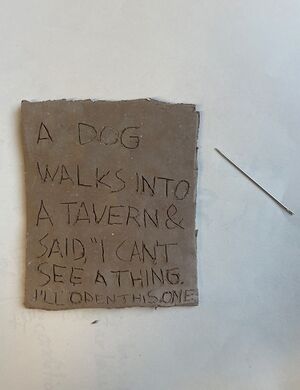Eternal Records (Wordhole)
An interesting aspect of archives to address, is the fact that most common data-storage devices are relatively short lived. In the age of information a vast majority of data is stored digitally in one form and other. It might be easy to forget that these mediums too have materiality, as we rarely directly interact with these devices, usually you need som sort of interface or interpreter like a computer or a disc-player.
The lifetime of different contemporary media varies, but they do not live forever. Take for an instance the hard disk drive, a device that stores data on spinning magnetic discs. Since they contain lots of moving parts, they are quite prone to deuteration over time, and one can expect a HDD to last a mere 3-5 years. The Solid State Drive, a more modern relative of the HDD, does not contain moving parts. Instead the SSD stores data via electrical signals on transistors. Thus you can expect it to last roughly 10 years. In fact none of the more recent ways of keeping records have a lifespan of more than a couple of decades at best. To work around this, modern archives are reliant on backups and copies in order to ensure that the data is safe.
read more on different data storage media here: https://www.arcserve.com/blog/data-storage-lifespans-how-long-will-media-really-last
Therefore if you want to make a record that is intended to last for lets say for centuries or even millennia, you will need a simpler and more durable way to encode the data. The best way to keep a record, or make a publication so that it will endure the tooth of time, is to either use paper or stone. An acid free paper with ink/print/scripture that is not prone to fading is a possible approach. Another way is to learn from ancient civilisations, and turn to stoneware tablets with the information imprinted in the material. Findings of such tablets are the reason we have insights in proverbs from the birth of society.
In order to interrogate this further recreations of said clay tablets have been made. Maybe this could help us gain insight in how such craftful and "primitive" could be applied in a contemporary setting. A tablet could be made with a flattened piece of clay, and a pointed object like a needle to engrave the information.

